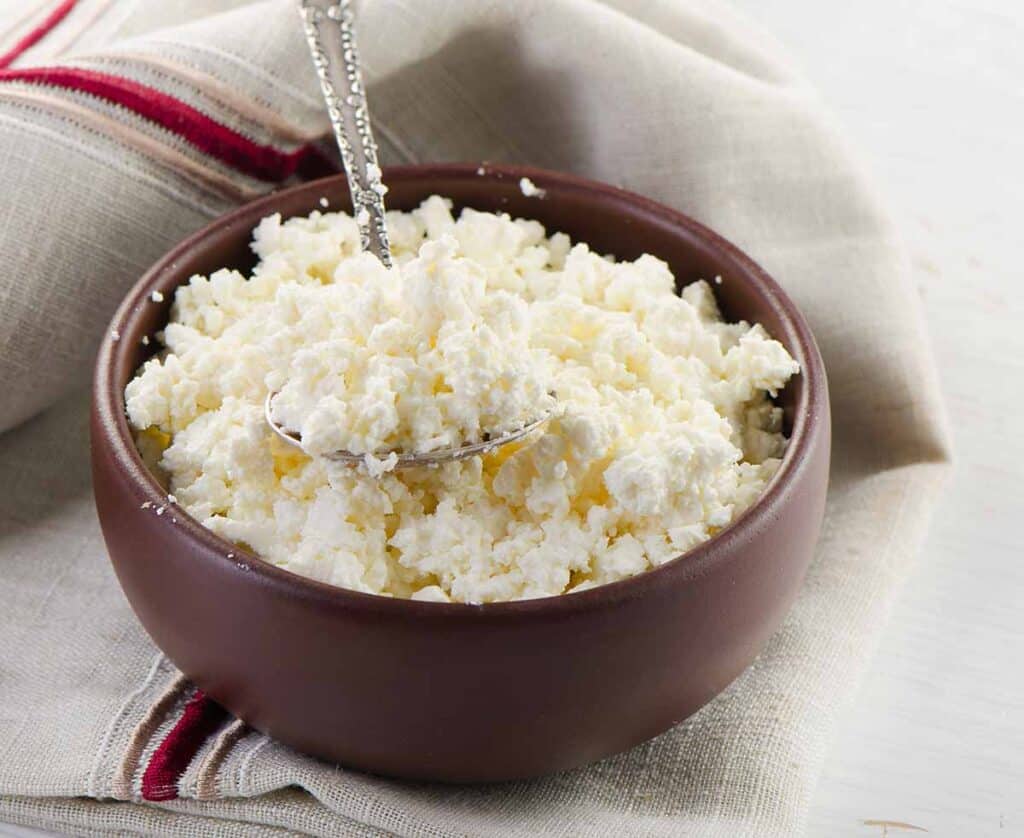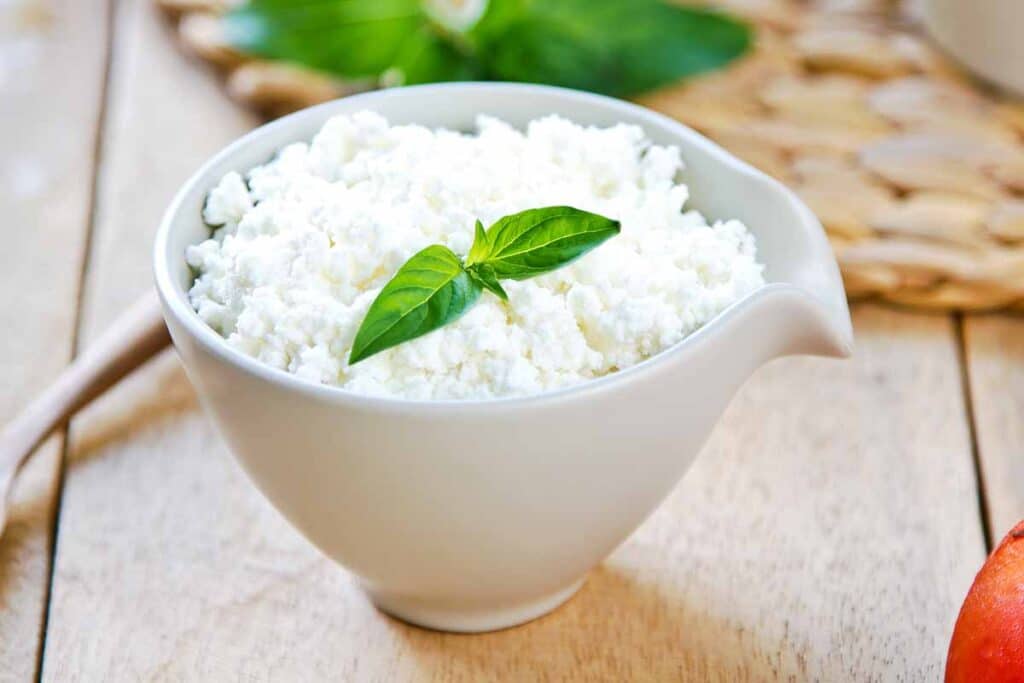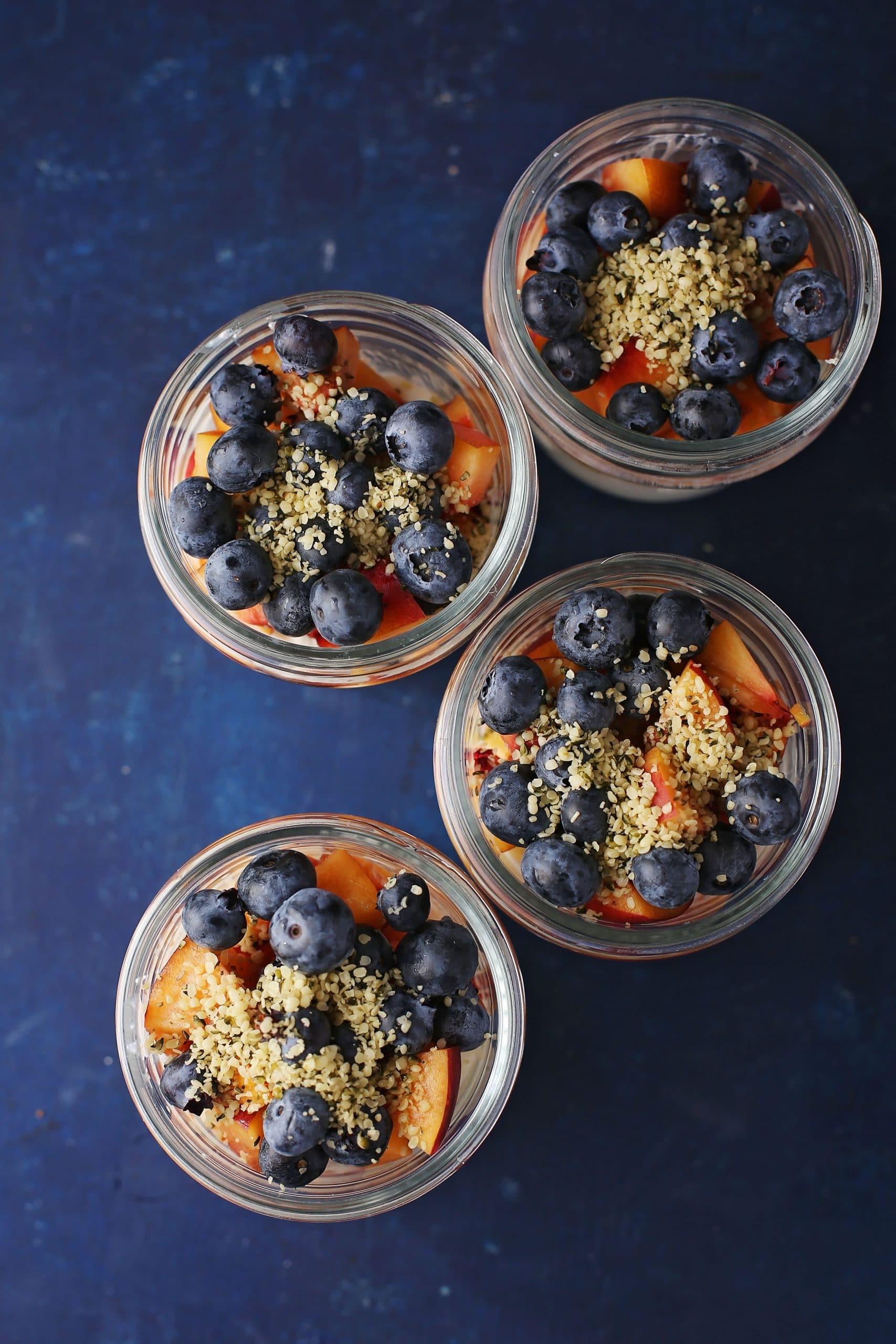When you make a quick cottage cheese vs. ricotta cheese comparison, you may think they’re just the same cheese. They look the same and have almost the same purposes, after all.
They’re both soft, white, and moist cheeses. However, they have distinct differences in taste, texture, uses, and nutrients, making them valuable and delicious ingredients in many recipes.
In this article, you will learn more about the similarities that allow you to use them in recipes interchangeably.
Moreover, you will discover their differences, nutritional content, and how to incorporate them into your dishes effortlessly.

Cottage cheese is a fresh cheese made from the curds of cow’s milk.
Cottage cheese taste is mild and tangy. It is characterized by its curd-like consistency, which can range from creamy to chunky.
It is prized for its high protein content and low-fat options.

Ricotta cheese is a creamy and slightly grainy dairy product originating from Italy.
It’s made from the whey left over during the production of other cheeses, like mozzarella and provolone. The name “ricotta” means “recooked” in Italian, reflecting this process.
Ricotta cheese taste is mild and slightly sweet, making it incredibly versatile in both savory and sweet dishes.

You see this cheese all the time in groceries, farmer’s markets, and cheese specialty stores.
They’re among the most commonly used cheeses because of their flavor, texture, and versatility.
Both cheeses are made from cow’s milk. Cottage cheese is made from the curds of whole milk or skim milk and usually comes in small curd, medium curd, or large curd cottage cheese varieties.
They’re fresh, soft cheeses that are moist and white. In addition, they don’t have that zing you get from other cheeses.
Both ricotta cheese and cottage cheese provide essential vitamins, minerals, and nutrients that will help you meet your daily nutritional requirements.
If you compare ricotta vs. cottage cheese nutrition, consider their calorie and fat content.
In general, cottage cheese has fewer calories. Meanwhile, ricotta cheese has a higher calorie content and saturated fat compared to cottage cheese.
A 100g ricotta cheese has approximately 15g of fat (primarily saturated fats) and 174 calories.
On the contrary, for the same serving of cottage cheese, you get only 4g of fat and around 98 calories.
But these two kinds of cheese are low in trans fat.
Cottage cheese also has lower cholesterol at 17mg than ricotta’s 49mg.
Both cheeses have fewer carbohydrates, which makes them an excellent option for low-carb or keto diets.
The same serving of cottage cheese has around 3.4g of carbohydrates, while ricotta has approximately 3g.
Ricotta typically has more Vitamin A. It has 120g of Vitamin A compared to cottage cheese’s 37g.
But unlike ricotta, cottage cheese has more folate.
Both are excellent sources of Vitamin D and Vitamins E, K, B12, B6, thiamin, pantothenic acid, niacin, and riboflavin.
Both cheeses are high in calcium. Ricotta is a richer source of potassium and has 111% more than cottage cheese.
But there are more omega-3 and omega-6 fatty acids in ricotta cheese.
Both cheeses are a great source of essential proteins for muscle building. But cottage cheese contains 47% more protein than ricotta cheese.
Compared to cottage cheese, which has 11g of protein, ricotta only has around 7g.
But ricotta has enough protein to provide you with all the essential amino acids.
You can also consider whole milk cottage cheese made from cows’ milk. It’s a small curd cottage cheese high in protein and makes a delicious snack or addition to any dish.
Cottage cheese has a tanginess and saltiness blend, making it an excellent ingredient in sweet and savory dishes.
This soft cheese adds a refreshing, light, acidic note to your dishes. Cottage cheese also has less salt.
But you can easily balance the tanginess and enhance the overall flavor if you add salt.
Meanwhile, fresh ricotta has a tangy and mild flavor. It has a creamier, more delicate flavor and lower sodium compared to ricotta salata, which has a saltier flavor and less creamy texture.
This saltiness is what adds depth to dishes and enhances their natural flavors.
If you like Italian food, try the Italian ricotta often used in many Italian dishes and desserts.
Cottage cheese is a type of fresh cheese that you’ll quickly recognize. It has a lumpy appearance because of its smaller curds and creamy and milky sauce.
Moreover, cottage cheese has a slightly grainy texture, giving this popular cheese a uniqueness that people enjoy.
Cottage cheese is made by adding acid to pasteurized milk to separate the milk solids from the whey. After which, the cheese curds are cut, pressed, rinsed, and seasoned with salt.
On the other hand, ricotta cheese, sometimes called whey cheese, has a very smooth, velvety, and creamy texture.
It’s made by heating the leftover whey from cheese production, resulting in a smooth, creamy curd that tastes rich and silky.
Although cottage cheese and ricotta are in many culinary creations, cottage cheese doesn’t melt as smoothly.
But when heated, it adds a nice texture to pasta like lasagna or baked dishes and casseroles.
Meanwhile, ricotta has better-melting properties and blends well in desserts, fillings, and sauces. It’s often used as a creamy layer in lasagna and as a binding agent in pasta recipes that require stuffed shells.

Both ricotta and cottage cheese are versatile, fresh cheeses you can use in many savory and sweet dishes.
Cottage cheese can be a suitable substitute for ricotta cheese in many recipes, especially in dishes where the texture and flavor of the cheeses are similar.
Here are some recipes for you to try, from ricotta pancakes to pasta, you can’t go wrong with them!
Are you planning a pasta dinner soon? Use ricotta and cottage cheese for your traditional lasagna or lasagna rollups.
It’s perfect for cannelloni and involtini and a filling for ravioli, manicotti, and other pasta shells.
Ricotta can make any sauce thicker and creamier, so use it for red and white pasta sauces.
It’s also an essential ingredient in pasta bakes.
You can use low-fat cottage cheese for your cheesecakes and cannoli.
You can also opt for regular cottage cheese, which works well in chocolate pudding or cake batters.
Or you can opt for sheep’s milk ricotta to make any dessert more nutritious and taste top-tier.
You can toss your favorite fruits and vegetables in a salad and add cottage cheese or low-fat ricotta for that tangy flavor.
Alternatively, you can blend cottage cheese into your blender for a smooth, creamy salad dressing.
If not, sprinkle some herbs, spices, lemon juice, and other seasonings to use as a tasty dip instead.
Slice some cucumbers, top them with smoked salmon, and sprinkle some herbs for a delicious snack.
Spread ricotta and cottage cheese on toasted loaf bread or baguette slices and drizzle it with honey. You can also add tomatoes for a quick bruschetta.
Use this fresh cheese to make muffins or an egg salad sandwich spread. You can also make cheese toast, cheese buns, and protein ricotta cheese waffles.
Ricotta has a higher calorie, cholesterol, and fat content, typically four times saturated fat.
But remember that full-fat cottage cheese is made from different types of milk fat, which means it will also have a high fat content.
Ricotta cheese also has a very fine curd size, giving it a smooth but slightly grainy texture.
Meanwhile, cottage cheese is lumpier and wetter.
As for flavor, ricotta has less salt and almost tastes sweet, except for ricotta salata, which is salted ricotta and has a texture like feta.
But ricotta is also higher in calcium, selenium, and vitamins B12, A, E, and D.
Moreover, it’s low-carb, making it suitable for people on a low-carb or keto diet.
Substituting cottage cheese for ricotta can add a nice flavor and texture to your dish, and it’s very easy, too!
Use a 1:1 ratio for your recipe for light or mild small-curd cottage cheese. Try it on pizza or pasta.
It’s simply due to personal preference. Some people opt for cottage cheese for a lighter lasagna because it’s lower in fat.
Ricotta makes a more decadent and thicker lasagna but is also higher in fat.
To make the best-tasting lasagna, you can go ahead and use both cottage cheese and ricotta. The two cheeses will make your lasagna rich and creamy.
Understanding the similarities and differences between ricotta and cottage cheese is essential for any home cook.
When you do, you can better appreciate each one’s cheese-making process, flavors, nutritional benefits, and culinary uses.
More importantly, you can easily incorporate them into your recipes for the best flavors and nutrients!






